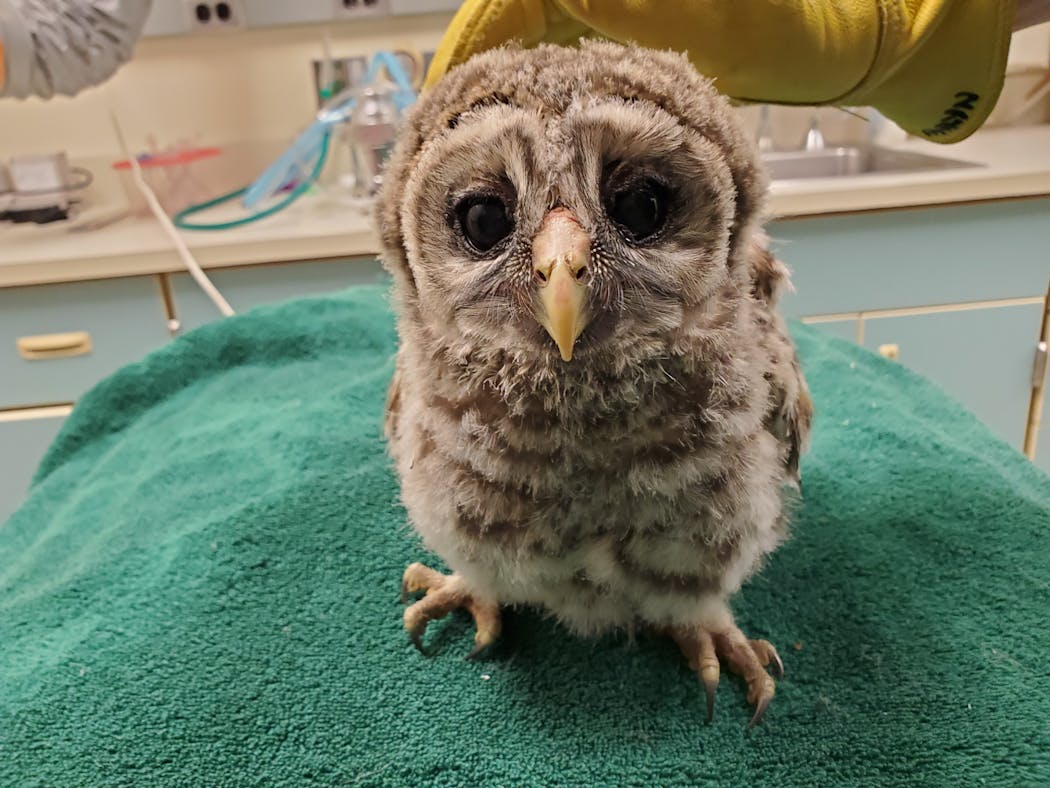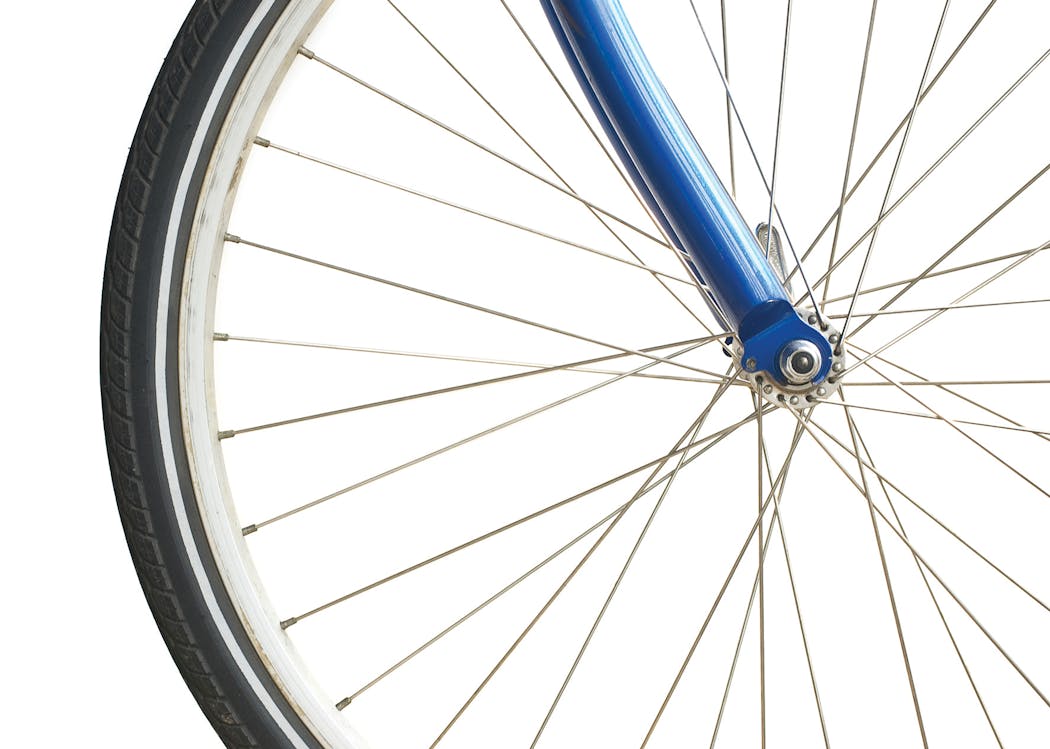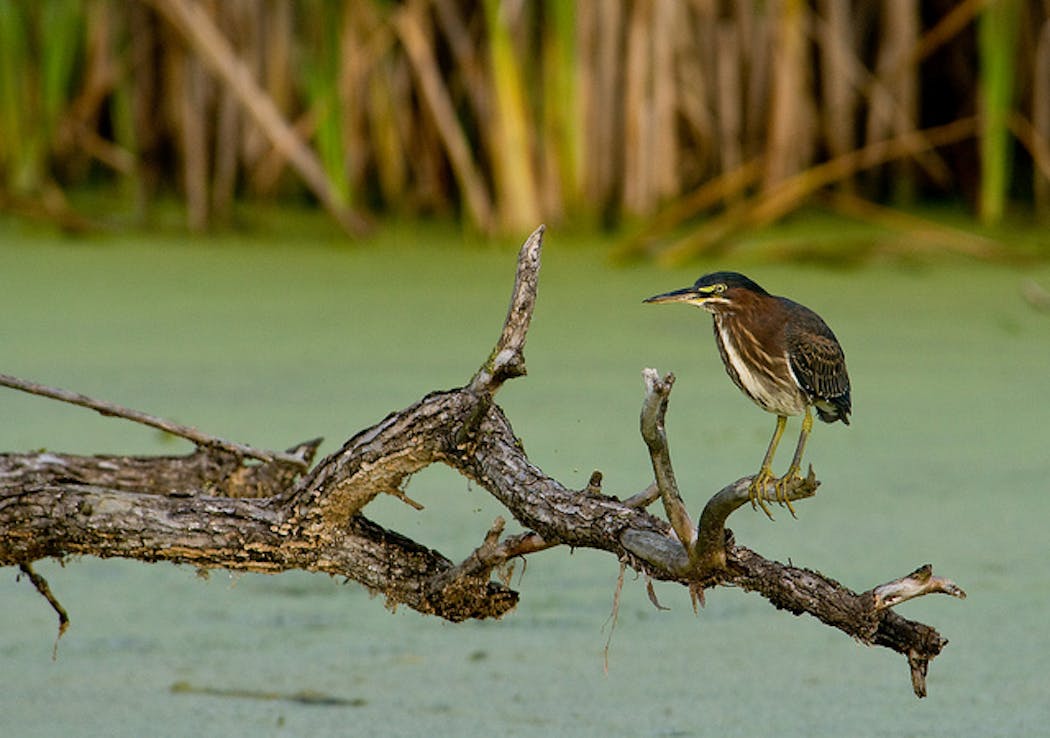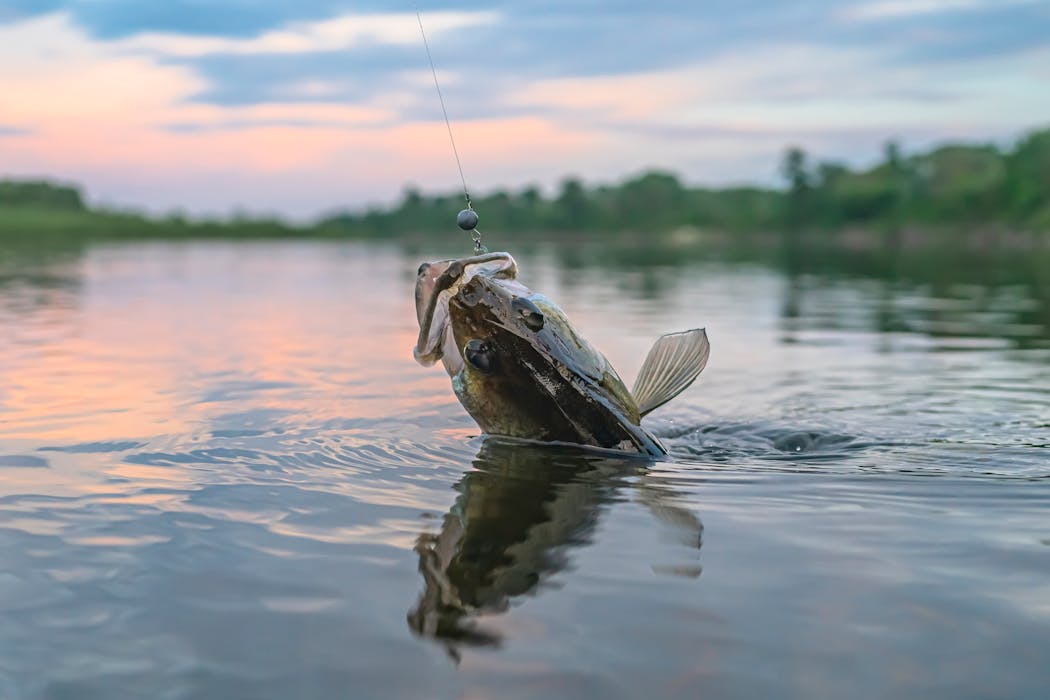Summer's bounty in the Minnesota outdoors feels, well, almost normal as public health improves. In that spirit and on the eve of Independence Day weekend, the freedom to embrace the breadth of outdoors possibilities is refreshing. From engaging with wildlife (indoors and out) to learning or refining paddling skills, to shooting clays and hiking, camping, or angling for some summer beauties, find your freedom in our list of ideas:
Float on the wild and scenic St. Croix River
Surprising as it might be to some Minnesota canoeists, lakes and rivers outside the Boundary Waters Canoe Area Wilderness can be fun to paddle, too.
Nowhere is this truer than on the St. Croix River, a waterway that while close to the Twin Cities truly deserves its designation as a federally protected Wild and Scenic River.
The best news is that you don't need to own a canoe to drift lazily down the St. Croix — you can rent one. From Osceola, Wis., upriver to Taylors Falls, Minn., and farther north still to Grantsburg, Wis., vendors can be readily located who hire out canoes and kayaks.
The St. Croix is low because of a lack of rain, but not too low to paddle. Plus, the slow flows allow canoeists opportunities to beach their two-ended craft on sandbars to play or swim in the river.
For extra fun, and a chance to catch a smallmouth bass, anglers might bring along a rod and reel, along with a handful of Mepps spinners, small crankbaits and jigs (and night crawlers).
Expect to pay $35 to $45 for a canoe or kayak rental. Most vendors also offer shuttles, enabling, for example, one-way trips between Taylors Falls and Osceola, about a three-hour mini-journey. Check out taylorsfallscanoe.com; riverwoodcanoe.com; and wildriverpaddling.com. - Dennis Anderson
Paddle like a pro, and learn from one
Whether you want to learn some paddling fundamentals or refine some skills, opportunity abounds through Three Rivers Parks District between its programming and, well, its water.
From skills programs (such as flatwater kayak basics) to specialty classes (like canoeing when the moon is full or history tours by paddle), the parks system has put together a breadth of classes that fill quickly. The key is to plan ahead because the programs are in high demand, said Brent Hennen, a recreation program specialist who also coordinates paddleboard classes.
Wait-listed for a class but want to get paddling in the meantime? Hennen said Fish Lake Regional Park in Maple Grove is an ideal place to put in, and there is a reason it is a popular spot for instruction. Fish Lake has a wake-free zone near the pavilion where paddlers can get acclimated. He also recommended Lake Rebecca near Delano (low traffic and wildlife viewing) and Little Long Lake in Kingswood Park in Minnetrista (deep and cold). Need a kayak or paddleboard first? Would-be paddlers can rent various watercraft at several Three Rivers parks in advance online, in two-hour blocks.
Hennen said something special happens while paddling: "It's a completely different, tranquil experience to be out on the water under your own power." - Bob Timmons
Try for a bite from a prehistoric fish
Minnesota sturgeon fishing reopened June 16 in most of the state and on July 1 for anglers working the Rainy River and Lake of the Woods.
Sturgeon can be caught throughout summer, with the action building in August and peaking in September. Observers on the St. Croix River have already reported numerous sightings of the prehistoric fish surfacing and "jumping" upstream of the Stillwater Lift Bridge. If you can locate them, catching them isn't easy, but it is simple: Drop a clump of worms and a minnow to the bottom and wait for a bite. Tackle consists of a heavy line, a heavy sliding sinker, a 12- or 18-inch leader and a No. 5 circle hook.
Darren Troseth, the state catch-and-release record holder for sturgeon, said the key to summer fishing is locating the big fish and avoiding recreational boat traffic. Besides the St. Croix and Rainy rivers, popular venues include Otter Tail Lake, the Mississippi River, the St. Louis River and the Kettle River. - Tony Kennedy
The raptors are ready again for visitors
The Raptor Center staff (yes, including its wild birds) gets to spread its wings beginning Tuesday, when it opens again for visits from the public.
The center at the University of Minnesota has been closed to visitors since March 2020, but it has been creative in its outreach, employing such features as "Zoomies" for its ambassador birds to sit in on virtual gatherings.
The center will ease into its return to normal for the benefit of the birds, some of which aren't used to the presence of humans outside familiar staff members, said Lori Arent, the center's assistant director.
For now, the public can sign up for tours of 10 at a time, five days a week. They'll find some new raptors, who arrived during the pandemic. Chase is a young Merlin; Warner is an eastern screech owl who spent time at Warner Nature Center; and Tufts is a new great horned owl.
The staff is eager to see the public again and connect with them through their work caring for injured raptors. In a normal year, 20,000 people visit. "We are excited," Arent said. - Bob Timmons
Get rolling with a holiday ride tradition
Minnesotans fixed up or bought bicycles, and from all appearances they are putting them to good use this spring and summer. Opportunities abound to join up with clubs and bike shops for weekly rides, and the calendar is filled with events for dirt, gravel and road.
A longtime club in Scott County has an organized event on July 4th meant to entice riders of all levels. In fact, the Great Scott Classic Bike Ride began before the club formed, put together by Frank Wicker, known as a pioneering cycling advocate in the Prior Lake area.
The ride departs from Lakefront Park in Prior Lake and includes distances of 50 and 25 miles and a Family Fun route of about 10 miles. There are rest stops with refreshments, and after the riding, lunch for all is served back at the park.
Event organizer Jennifer Sobota said 150-200 riders are expected. The club, which has 140 members and began in 1999, donates some of the money raised to local youth cycling groups, and in recent years some funds helped create bike maintenance stations at two local parks in the Three Rivers Parks District.
"This is the event of the year for us," Sobota said.
People can register in advance or the morning of the ride. Registration is $35 for adults and $20 for children (fun ride, $10 and $5). Find details to register online at greatscottcycling.com/gsbr. Call 952-479-0038 for more information. - Bob Timmons
Everyone's doing it: Trap shooting is hot
You don't have to be a crack shot to enjoy trap shooting — a fact that more Minnesotans are discovering.
"It's not a quiet sport anymore," said Mark Stevens, president of the Minnesota Youth Shotgun Association.
At his local range in Buffalo, Stevens has seen opportunities skyrocket from three days a week before 2008 to seven days a week since 2017. Many ranges offer youth programming to go along with adult leagues and open shooting.
"Every gun club you go to is pretty much busy," he said.
His advice is to call ahead. If your personal inventory of shotgun shells is out because of the ammo shortage, some clubhouses still sell target loads for immediate shooting at the range.
This summer marks the return of large outdoor competitions, such as the Minnesota State Shoot that opens Tuesday in Alexandria. - Tony Kennedy
Minnesota Valley refuge options abound
A person could spend nearly every summer weekend at the giant Minnesota Valley National Wildlife Refuge and not explore all of its trails, nor see its encyclopedic list of birds and other wildlife.
Established in 1976, the refuge comprises more than 14,000 acres and snakes along the Minnesota River from Bloomington to Henderson, Minn. With 45 miles of trails, the refuge is a hiker's dream. Among other allowed activities, seasonally, are hunting, fishing and wildlife photography.
The refuge's centerpiece is its Bloomington education and visitor center. The expansive operations hub with its multiple wildlife and ecological displays is a magnet for curious kids and adults alike. Unfortunately, because of lingering federal COVID regulations, the building remains closed (follow the refuge website at bit.ly/minnfws for updates). Refuge properties are nevertheless mostly open and visitors are welcome sunrise to sunset daily.
Among refuge accesses are those in or near Bloomington, Burnsville, Shakopee, Chaska or Carver/Jordan.
Detailed trail maps, along with visitor reviews, are available on the refuge website. One trail, Bass Ponds, (just shorter than a mile) offers fishing and bird-watching along a wide, flat pathway. Ninety-seven online reviewers gave the trail an aggregate 4.6 out of 5 stars, with one saying, "The kids love this place because of the lush vegetation in the creek leading down to the ponds."
Bikes and leashed dogs are allowed on refuge trails. - Dennis Anderson
Fishing tourneys return with a twist
Minnesota fishing tournaments — canceled in great numbers last year — have returned to pre-pandemic levels this summer with an additional upside. Many organizers have switched their scoring method from weighing fish on shore to catch-and-release formats in which fish measurements are recorded on board.
Henry Drewes, the Department of Natural Resource's northwest regional fisheries manager in Bemidji, said the trend reduces stress on fish, reduces crowding at boat launches and is good for relationships between tournament organizers and lake residents.
From the "Cats Incredible" catfish tournament on the Red River in July to the "Chili Bowl" walleye classic on the Rainy River in October, Minnesotans stage some 400 fishing tournaments a year. In July alone, anglers will compete in 56 events big enough to require a permit from the DNR. - Tony Kennedy
Simple backdoor experiences work, too
Sustaining kids' natural sense of wonder is challenging, given distractions today that vie for young people's attention, electronic gizmos and social media being primary.
Yet adults who recognize that time they spend outdoors with a child is most important in cultivating a kid's lifelong bedazzlement with the natural world — rather than where they spend that time or how much it costs — have the best chance for success.
Faraway outdoor destinations can be well and good, in other words. But to a young kid, a backyard's trees, birds, soil-between-the-toes, marshmallow roasts over hot coals and nights spent in a tent can be just as exotic, making these out-the-back-door sites ideal for first camping experiences.
Writer Rachel Carson recognized the importance of adults sharing outdoors experiences with kids more than a half-century ago.
"If a child is to keep alive his inborn sense of wonder," she wrote, "he needs the companionship of at least one adult who can share it, rediscovering with him the joy, excitement and mystery of the world we live in."
Haven't made plans yet with your kids this weekend? Pitch a tent out back.
Prefer instead to dip your toes more gradually into this pool of new adventures? Then first read to your kids from any of the multitude of books that introduce young people to camping. Perhaps you'll rekindle your imagination while stirring theirs, setting the stage for a first campout. - Dennis Anderson
Consider the Cannon River playground
Among Minnesota's lesser-known-but-still-stellar rivers is the Cannon, which bends and turns for about 112 miles from Lake Tetonka near Waterville before spilling into the Mississippi at Red Wing.
The Cannon can rise quickly during heavy rains because it drains a fairly large (1,460 square miles) farmland-dominated watershed. Caution is therefore advised when canoeing certain portions of the river after downpours.
Yet canoeing, kayaking and especially tubing are popular on the Cannon in summer and are still options for Minnesotans who want to cool off and perhaps see a new part of the state over the July 4th weekend.
Welch Mill (welchmill.com) is the biggest rental outfit on the Cannon, and bicyclists plying the Cannon River Trail, which parallels the river on its south side, often entertain themselves watching flotillas of inner-tube-encircled Welch Mill customers loaf their way downstream.
Welch Mill offers short or long tube (and canoe and kayak) trips, each with shuttles to return floaters to their vehicles. A valid driver's license is required to rent tubes ($15 apiece; up to 15 tubes can be rented on the same license). Life jackets are available free of charge and kids under age 10, by law, are required to wear them.
To keep the river clean, prohibited items include plastic foam coolers and — in case you were considering bringing one — kegs of beer. Welch Mill doesn't take credit or debit cards, requiring instead cash or in-state personal check. - Dennis Anderson
Guide yourself through a forest bath or find a class
Find a quiet place in the woods and close your eyes. Listen to the sounds of nature as far away as you can hear. Feel the breeze. Smell the air. Meditate. You are forest bathing.
Minnesota's first self-guided forest bathing trail opened in December at Silverwood Park in St. Anthony. Only a quarter-mile long, its purpose is to help visitors "unplug and experience a meaningful and therapeutic immersion into nature."
Unfamiliar in the United States but gaining popularity, these figurative healing baths with proven health benefits are a subject of study at the University of Minnesota and the techniques are taught in such settings as Dakota County's Spring Lake Park Reserve, the Minnesota Landscape Arboretum, nature centers and state parks.
Leigha Horton of Silvae Spiritus, a nature and forest therapy business, said public classes are revving up again after being idle last year.
"Forest bathing is where yoga was 30 years ago," she said. "The people who experience it really do seem to love it." - Tony Kennedy
Check in on a special herd of bison parents and calves
Here is an opportunity to meet "superheroes" of the wild, attention-grabbing in their own right. The bison herd at Minneopa State Park in Mankato, part of a Minnesota Bison Conservation Herd partnership that began in 2011, added 12 calves this spring. They've grown quickly. Some still have their reddish-orange coats, while others have become brown like the adults.
The herd numbers 44. It is most active in the morning and late afternoon, said park naturalist Scott Kudelka. Of late they can be spotted in their quickly diminishing water hole.
The park's Bison Drive is a great vehicle for watching them. The range is open 9 a.m.-8:30 p.m. Kudelka suggested visitors stop to check out the Seppmann Mill at the end of the drive. There, two volunteer "bison ambassadors" are stationed at the mill's overlook and prepared to answer questions about the herd.
"I think bison are that iconic animal that people get really excited about," Kudelka said. "It doesn't matter if it is your first time or 100th, people get really excited."
Kudelka will lead a program at 7 p.m. Saturday at the park about characteristics that make the bison remarkable, like running 35 miles per hour and being unfazed by 30-below weather. To attend the "Build a Bison" presentation, e-mail Kudelka at scott.kudelka@state.mn.us.
Kudelka said they are marvels. "They have everything they need." - Bob Timmons









